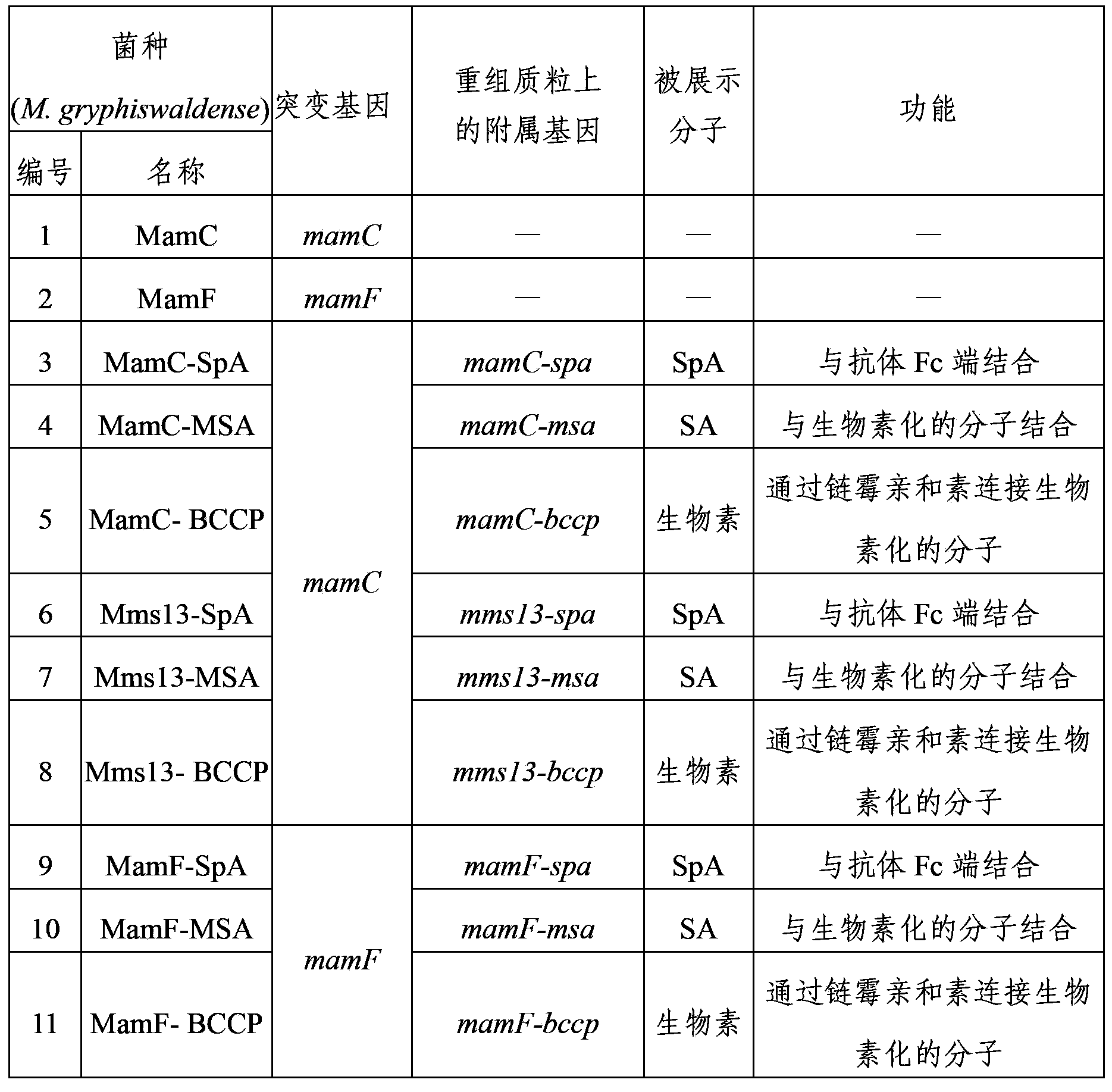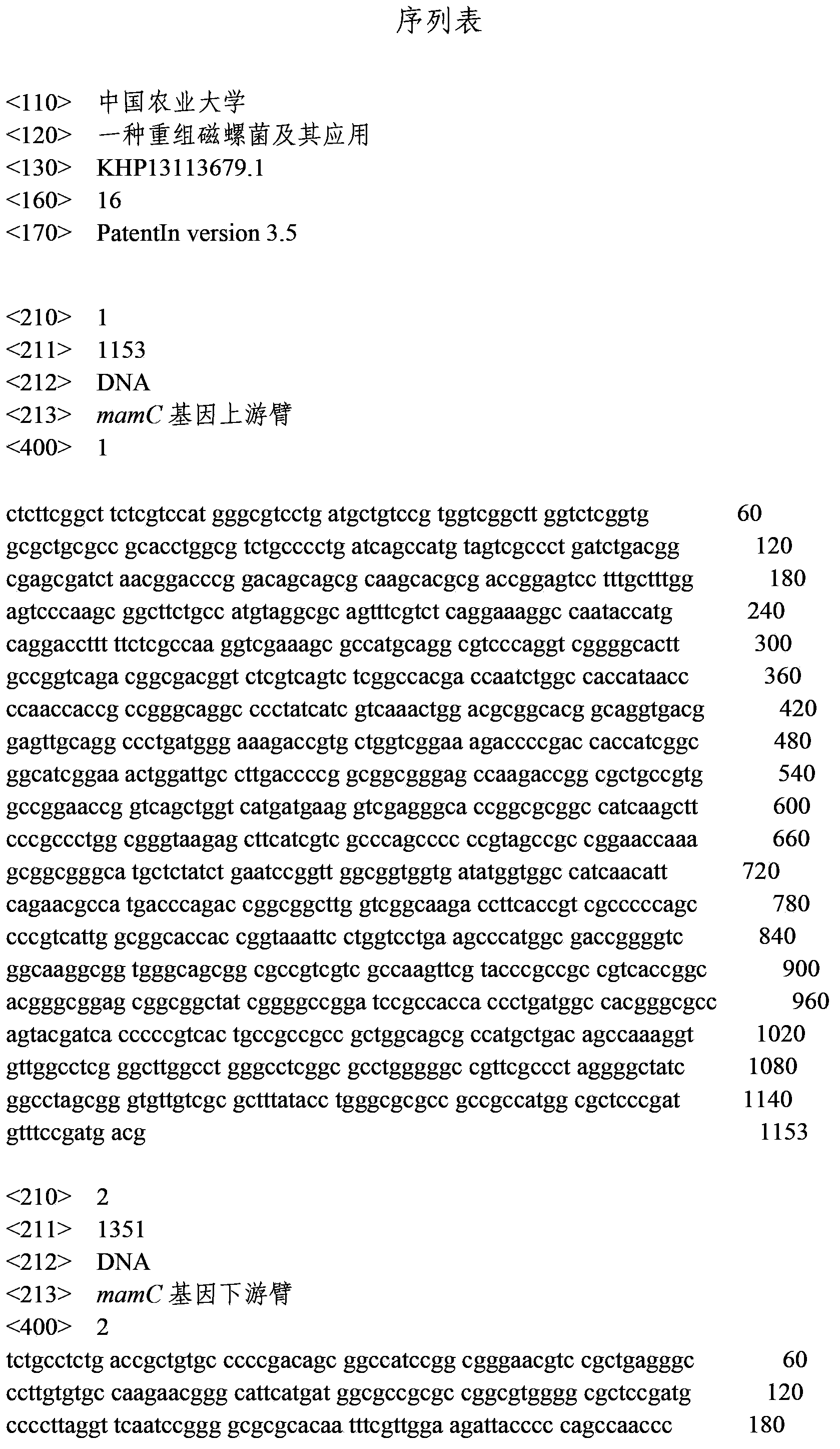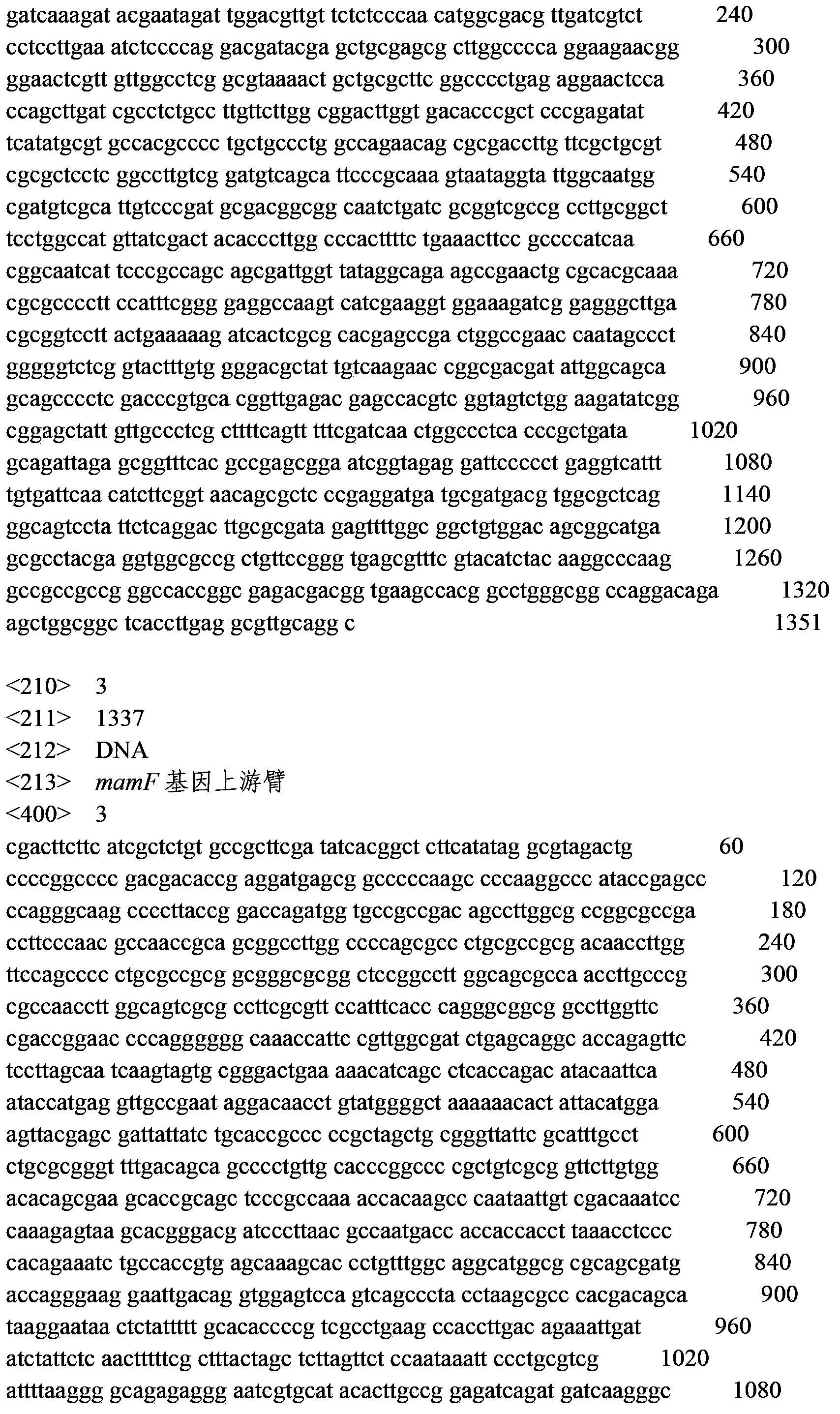Recombinant magnetospirillum gryphiswaldense and applications thereof
A magnetic spirochete, recombinant plasmid technology, applied in the direction of recombinant DNA technology, bacteria, introduction of foreign genetic material using vectors, etc., can solve the problems of not exerting the advantages of magnetosomes, loss of antibody activity, etc.
- Summary
- Abstract
- Description
- Claims
- Application Information
AI Technical Summary
Problems solved by technology
Method used
Image
Examples
Embodiment 1
[0033] Construction of mamC and mamF mutants of M. gryphiswaldense MSR-1
[0034] By constructing recombinant plasmids, using the method of PCR amplification respectively, the upstream and downstream fragments of about 1 kb of the mamC gene (respectively denoted as S and X fragments, the S fragment is shown in SEQ ID No.1, and the X fragment is shown in SEQ ID No. .2), these two fragments and the gentamicin (Gm) resistance gene fragment of 0.8kb were directionally cloned into the multiple cloning site of the suicide vector pUX19 to construct the recombinant suicide plasmid pUX19-MamC-S-Gm -X, and then replace the mamC gene fragment with the resistance gene by homologous double crossover. Specific steps are as follows:
[0035] 1. Use primers mamC-S-F-XbaⅠ / mamC-S-R-KpnⅠ and mamC-X-F-KpnⅠ / mamC-X-R-PstⅠ to amplify the upstream and downstream regions of the mamC gene (viewing the upstream and downstream regions in the direction of the whole genome), and electrophoresis separation...
Embodiment 2
[0045] The acquisition of embodiment 2spa gene, bccp gene and the construction of recombinant monomer msa gene
[0046] Cultivate Staphylococcus aureus (Staphylococcus aureus) ATCC6538, extract its whole genome as a template, and use primers Spa-LF (as shown in SEQ ID No.9) and Spa-RB (as shown in SEQ ID No.10) to amplify Get the full-length spa gene. Wherein, primer Spa-LF comprises Linker sequence (Gly 4 Ser) 3 , Primer Spa-RB contains BamHI restriction site.
[0047] Genomic DNA of Magnetospira wild-type strain MSR-1 was extracted as above, and used as a template to amplify with primers BCCP-F (as shown in SEQ ID No.11) and BCCP-R (as shown in SEQ ID No.12). The biotin carboxyl carrier protein gene bccp was added. Wherein, primer BCCP-F comprises Linker sequence (Gly 4 Ser) 3 , Primer BCCP-R contains XbaI restriction site.
[0048] According to the sequence of the streptavidin gene (sa) of wild-type Streptomyces avidinii, we code it for valine at position 55, threoni...
Embodiment 3
[0049] Construction of each fusion protein gene of embodiment 3
[0050] The construction of the expression plasmid pMamC-MSA containing MamC and monomer streptavidin fusion protein gene, the specific steps are as follows:
[0051] 1. Use the wild-type MSR-1 genome as a template, use mamC-exp1-KpnI as an upstream primer, and mamC-exp2 as a downstream primer to amplify the mamC gene. The gel was cut and recovered, then connected to pMD18-T Simple Vector, and transformed into E.coli DH5α competent cells. After PCR verification and correct sequencing, the resulting recombinant plasmid was named pT-MamC-exp.
[0052] 2. Use pT-MamC-exp and recombinant monomeric streptavidin fragment MSA as templates simultaneously, use mamC-exp1-KpnI as upstream primer, and MSA-EcoRI as downstream primer, perform fusion PCR to obtain mamC gene and msa The fusion fragment of the gene was electrophoresed on agarose gel, recovered by gel cutting, then connected to pMD18-T Simple Vector, transformed ...
PUM
| Property | Measurement | Unit |
|---|---|---|
| diameter | aaaaa | aaaaa |
Abstract
Description
Claims
Application Information
 Login to View More
Login to View More - R&D
- Intellectual Property
- Life Sciences
- Materials
- Tech Scout
- Unparalleled Data Quality
- Higher Quality Content
- 60% Fewer Hallucinations
Browse by: Latest US Patents, China's latest patents, Technical Efficacy Thesaurus, Application Domain, Technology Topic, Popular Technical Reports.
© 2025 PatSnap. All rights reserved.Legal|Privacy policy|Modern Slavery Act Transparency Statement|Sitemap|About US| Contact US: help@patsnap.com



